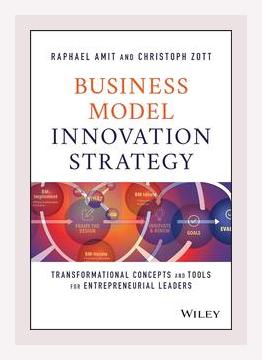Innovation and CreativityBusiness Model Innovation
Introduction: Setting the Stage for Innovation
Sanders Scherpenisse opens “BizVizz: Business Model Innovation” with a discourse on the centrality of innovation in the continuity and success of businesses. He argues that in a rapidly changing global economy, companies must continuously reinvent their business models to stay competitive and relevant. The purpose of this book, Scherpenisse explains, is to equip business leaders with actionable strategies and illustrative examples to foster a culture of innovation within their organizations.
1. Understanding Business Model Innovation
Scherpenisse asserts that understanding the fundamentals of business model innovation is the groundwork for implementing change. He defines a business model as the blueprint that represents how an organization creates, delivers, and captures value. Innovation in this context is about fundamentally rethinking the components of this blueprint.
- Actionable Insight: Leaders should map out their current business model using tools like the Business Model Canvas to identify areas that need transformation.
Example: Southwest Airlines reshaped the airline industry by adopting a low-cost carrier model focused on point-to-point transit rather than the hub-and-spoke system used by legacy carriers.
2. The Importance of Customer-Centric Thinking
Emphasizing the shift from product-centric to customer-centric thinking, Scherpenisse illustrates how businesses must align their model to the needs and preferences of their customers.
- Actionable Insight: Conduct customer journey mapping to deeply understand customer pain points and identify opportunities for innovation.
Example: Starbucks shifted from merely selling coffee to creating a ‘third place’ between home and work, which has driven significant customer loyalty and business growth.
3. Leveraging Technology for Transformation
Scherpenisse details the importance of integrating technology in business model innovation. He underscores that digital transformation is not just about adopting new technologies but rethinking value creation in the digital age.
- Actionable Insight: Adopt an agile approach to technology integration and consistently experiment with emerging technologies to drive innovation.
Example: Netflix transitioned from a DVD rental service to a streaming platform, leveraging digital technology to disrupt the media consumption industry.
4. Reinventing Value Propositions
Providing a value proposition that distinctly solves a problem or fulfills a need is key. Scherpenisse talks about how innovating around the value proposition can differentiate a company from its competitors.
- Actionable Insight: Engage in value proposition design workshops with cross-functional teams to brainstorm and test new value propositions.
Example: Dollar Shave Club’s subscription model provided a new value proposition in the razor market, offering convenience and cost savings, which disrupted the traditional retail model.
5. Creating a Culture of Innovation
Scherpenisse emphasizes that innovation should be embedded in the company culture rather than being a one-off project. Encouraging experimentation and learning from failures is crucial.
- Actionable Insight: Implement a structured innovation process such as Google’s 20% time rule, where employees spend a portion of their time on innovative projects beyond their regular tasks.
Example: 3M encourages employees to devote 15% of their work time to pursuing their own ideas, leading to the creation of products like the Post-it Note.
6. Business Model Patterns
Scherpenisse provides an extensive exploration of different business model patterns that companies can learn from and adapt to their circumstances. These patterns serve as inspirations for companies looking to innovate their models.
- Actionable Insight: Analyze and adapt proven business model patterns like the Freemium or Platform Model that fit your market and objectives.
Example: Spotify uses the Freemium model, offering a free, ad-supported tier alongside premium subscriptions, thereby attracting a large user base and converting free users to paying customers over time.
7. Collaborating for Innovation
Collaboration with external partners, startups, and even competitors can lead to breakthrough innovations. Scherpenisse discusses open innovation as a key strategy.
- Actionable Insight: Establish innovation partnerships or participate in industry consortia to share knowledge and co-create innovations.
Example: Procter & Gamble’s Open Innovation model encourages external innovators to bring forward new product ideas, which has led to several successful product lines.
8. Exploring New Revenue Streams
Revenue model innovation is another crucial aspect covered by Scherpenisse. He stresses the need to explore alternative and diversified revenue streams to increase financial stability and growth.
- Actionable Insight: Pilot new revenue models in small market segments to test feasibility without risking existing business operations.
Example: Adobe’s shift from selling perpetual software licenses to a subscription-based model increased recurring revenue and customer retention.
9. Sustainable Business Model Innovation
Sustainability and social responsibility are increasingly important. Scherpenisse argues that integrating sustainable practices into the business model can drive long-term success.
- Actionable Insight: Integrate sustainability goals into your business strategy and develop eco-friendly products and services.
Example: Unilever’s Sustainable Living Plan focuses on products that reduce environmental impact and support social good, which has resonated with consumers and driven business growth.
10. Measuring Innovation Success
Scherpenisse underscores the importance of measuring innovation outcomes. He advocates for setting specific key performance indicators (KPIs) to track the success of innovation initiatives.
- Actionable Insight: Develop a balanced scorecard for innovation projects to measure KPIs such as time-to-market, revenue impact, and customer satisfaction.
Example: Intuit uses rapid experimentation and measures success with metrics like customer benefit score and product adoption rates, allowing quick pivots and improvements.
Conclusion: Continuous Evolution
In the final pages, Scherpenisse concludes that business model innovation is a continuous journey rather than a destination. Companies must stay vigilant and adaptable to continue thriving.
- Actionable Insight: Periodically review and update your business model to incorporate emerging trends and technologies.
By providing a structured approach and examples from various industries, “BizVizz: Business Model Innovation” offers actionable insights for leaders seeking to transform their business models. The book emphasizes the need to understand foundational concepts, leverage technology, reinvent value propositions, create an innovative culture, explore new revenue streams, and continuously evolve. Each chapter leaves readers with concrete steps to implement these strategies in their organizations.
